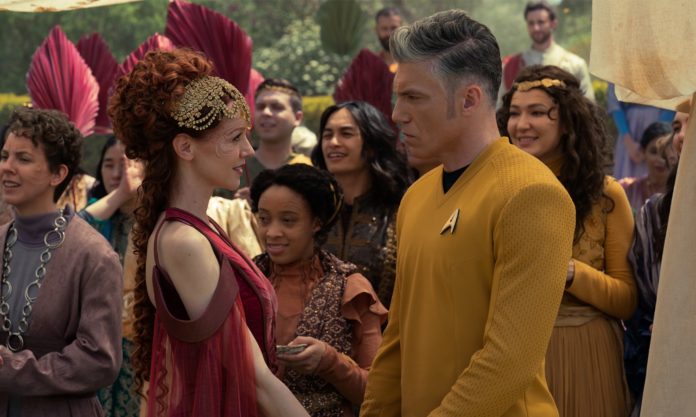In a post on Lit Reactor, Joshua Isard says that two writers can tell the same story in entirely original and unique ways…unless one is literally copying the other. In an episode of the Star Trek spin-off Strange New Worlds, the writers are guilty of the latter, he says.
According to Isard, episode six, “Lift Us Where Suffering Cannot Reach,” directly lifts its plot from Ursula Le Guin’s short story “The Ones Who Walk Away from Omelas.” In both, the success of a technologically advanced society relies on the sacrifice of a child’s life. While some fans argue that Star Trek was merely retelling a classic story, Isold says they ripped it off.
In fairness, he doesn’t mean plagiarism. He believes the writers of the episode anticipated that their audience would recognize the source of their idea. Still, the episode is bad. “It’s bad because there is nothing new in the way the Omelas story is retold,” Isold says. “The fulcrum of the story and episode are both the moral problem of whether you’d be willing to live in a utopian society if all the good in that society was based on the suffering of a single small child—everything and everyone else is amazing, but that child suffers horribly for it.”
Like all literature, science fiction – including Star Trek – has a legacy of retelling classic tales, and often does it well. But what makes a retelling worthy, rather than a rip-off?
In the abstract, Isold says the writer must do something new and significant with the original concept. For example, James Joyce reinterpreted the Odyssey has an epic of modern Ireland, examining concepts – such as alienation, Christianity, and sexuality – that weren’t imagined in the same way during the time the original was written. “The wandering is the same architecture, but the themes, style, and structure are completely different,” Isold explains. “That’s new and significant.”
In more modern writing, Michael Cunningham retold Virginia Woolf’s Mrs. Dalloway as The Hours, but used different characters from different times to represent the eponymous character. In Rosencrantz and Guildenstern are Dead, Tom Stoppard relates the story from Hamlet from a wildly different perspective. Other novels change the sex, ethnicity, or sexuality of main characters to tell a similar story from an entirely different perspective.
“The upshot of a retelling should be that both stories enhance one another,” Isold says. “A good retelling can get us to look at the original in a different way, while also standing on its own.”












